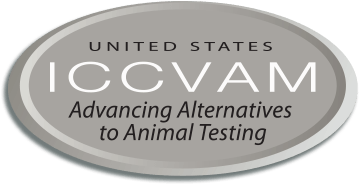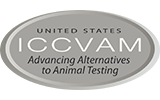ICCVAM advisory committee meetings
The Scientific Advisory Committee on Alternative Toxicological Methods (SACATM) is a federally chartered advisory group that advises NICEATM, ICCVAM, and the Director of NIEHS about ICCVAM activities.
Traditionally held in person, the September 21-22, 2022, SACATM meeting was held virtually because of restrictions on gatherings due to COVID-19. About 300 people viewed each day of the webcast; representatives from two International Cooperation on Alternative Test Methods (ICATM) participating organizations presented or attended. ICCVAM asked SACATM members to specifically advise on metrics and measures of success and new approaches to validation. In response, SACATM members urged ICCVAM agencies to expand their efforts to measure progress in adoption of new approach methodologies (NAMs) for chemical testing. They encouraged agencies to work with stakeholders to share data on animal use and provide incentives for reducing animal use. The committee also encouraged ICCVAM agencies to consider relevance to human biology when evaluating a non-animal test method for a specific purpose, rather than relying on a simple comparison to historic animal data.
The September 21-22, 2023, SACATM meeting was held in person at NIEHS in Research Triangle Park, NC. About 70 people attended in person and over 100 people viewed each day of the webcast; representatives from four participating organizations of the ICATM presented or attended. This event focused on detailed discussion of the status of replacement of animal testing for required acute toxicity testing and approaches to validation for new methods. Participants also considered how NAMs could be used to improve environmental health protection. SACATM members and commenters praised ICCVAM agencies on their accomplishments in reducing animal use for determining whether chemicals might cause acute effects such as oral toxicity and skin sensitization. They advised agencies on how they might address remaining challenges, such as predicting whether chemicals might cause complex effects such as developmental neurotoxicity, or characterizing effects of PFAS and other emerging contaminants. They also emphasized the need for clear communication from agencies to stakeholders.



